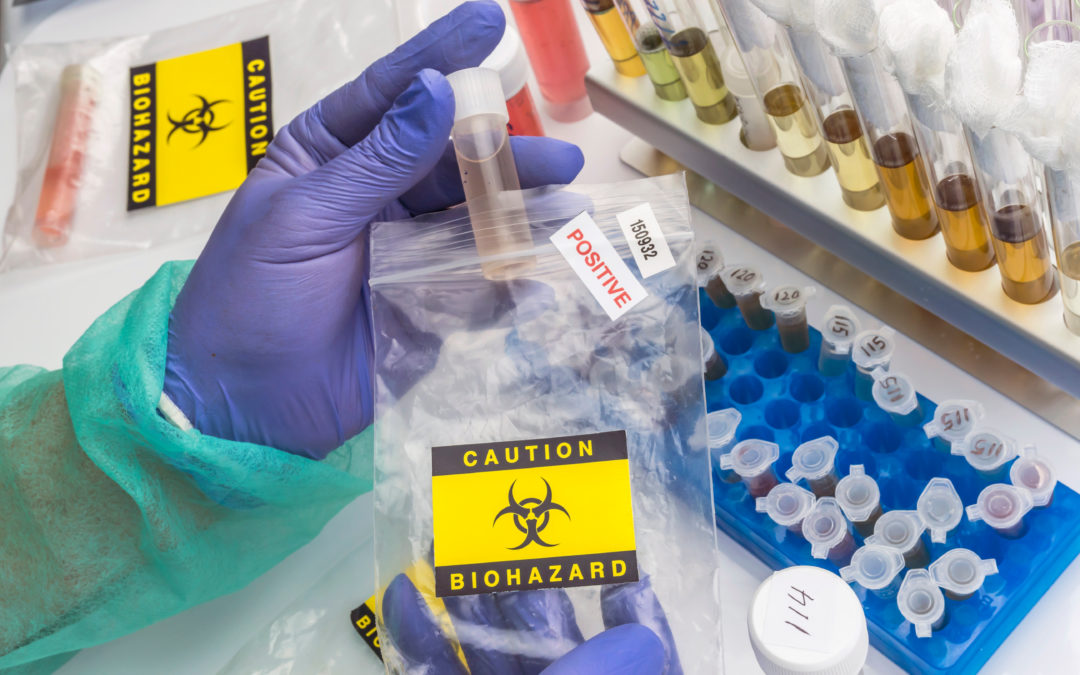World Health Organization Standards for Medical Plastic Bags
The World Health Organization (WHO), has been one of the industry authorities to outline regulations for medical plastic bags. According to the standards they’ve established, manufacturers must make medical plastic bags that:
- Protect the product within from the external environment
- Are sterile — completely free of dirt and biological contamination
- Display the correct product identification and information
- Don’t react with either the internal contents or the outside environment
- Don’t damage the product in any way
- Retain the purity, strength, and quality of the product
- Protect the product against light, moisture, physical damage, oxygen, and temperature variations
5 Types of Medical Plastic Bags
From packaging prescriptions to disposing of hazardous waste materials, there are a multitude of medical applications that require some form of packaging — and, in most cases, there’s a unique type or style of plastic bag that’s ideal for each one. Below, we’ll take a look at just 5 of the most common types of medical plastic bags, what they’re used for, and what features they must have to get the job done safely and effectively.
1. Pharmacy Bags
There are three main characteristics that pharmacy bags must present: durability, privacy, and tamper resistance. Therefore, they’re usually manufactured with extremely durable high-density polyethylene (HDPE) material and a sealed closure that reduces the potential for any tampering. They’re also commonly made with an opaque color that hides what’s inside, in an effort to protect patient privacy.
2. Sterilization Bags
In hospitals, doctors’ offices, laboratory settings, and more, most medical equipment cannot be exposed to contaminants — which is where sterilization bags come into play. Sterilization bags are generally used in conjunction with a sterilizing device to effectively disinfect medical equipment so it is safe for use on patients. They’re often tinted a translucent color, and are specifically designed to allow sterilizing chemicals, heat, vapor, or steam to enter.
3. Specimen Bags
Specimen bags are used for transferring potentially hazardous samples from hospitals to labs. They’re made with highly durable packaging materials like HDPE, and are even sometimes built with a three-wall design that provides multiple levels of protection for both the specimen and the personnel handling it. Specimen bags can (and should) be customized to display a “HAZARD” marking, as well as other printed messages that provide pertinent information regarding the sample, such as the temperature it should be stored at.
4. Water-Soluble Bags
Water-soluble bags are an environmentally friendly packaging option most commonly used to transfer contaminated clothing and linens to the laundry. This helps medical staff maintain hygiene and avoid any risk of contamination from hazardous specimens. These bags can accommodate moist or dirty linens for hours without damaging them, and they’re completely soluble in water that is at least 140°F.
5. Transfer Bags
As the name suggests, transfer bags are used to transfer drugs from the pharmacy to the site where they’re needed, whether that be a hospital or outpatient facility. In order to ensure all medications make it to the desired location safely, these bags are manufactured with durable materials, including a strong adhesive and tamper-evident seal closure. They’re also usually customized with a label that explains their purpose.
Benefits of Using Poly Bags for Medical Plastic Bag Applications
Although there are plenty of packaging options that can uphold medical-grade regulations, poly bags are the best option for each of the previously mentioned applications. Here are a few reasons why:
- They’re durable – Plastic poly bags are much more durable than paper bags, and can be made with varying materials and mil strengths to accommodate your application’s specific needs.
- They’re customizable – Poly bags can be customized to fit any identification, labelling, or brand information your application requires.
- They’re cost-effective – Poly bags are the most affordable, yet durable packaging option, which makes them especially desirable when you need to order in bulk quantities.
- They’re compact – Poly bags are thin, lightweight, and easy to transport and store, which is also especially important when you need to order in bulk quantities.
Whether you’re a distributor or a small manufacturer, A-Pac manufacturing produces medical plastic bags for a variety of applications. If you need quality medical-grade poly bags, we can help. Talk to our team for more information.

